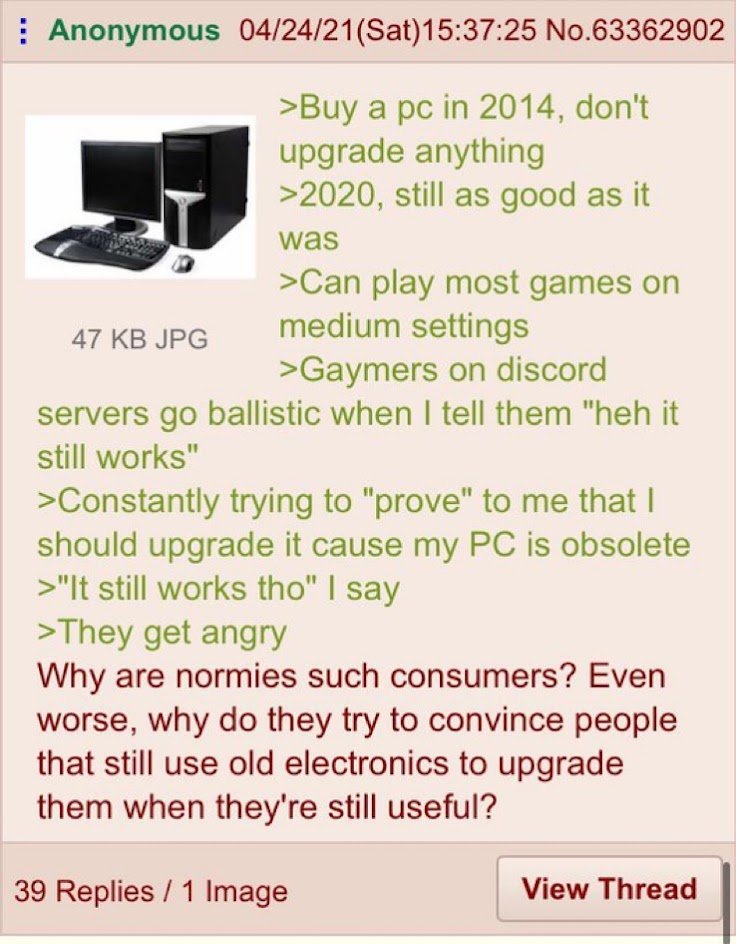this post was submitted on 05 Jan 2025
1041 points (98.2% liked)
Greentext
4751 readers
1232 users here now
This is a place to share greentexts and witness the confounding life of Anon. If you're new to the Greentext community, think of it as a sort of zoo with Anon as the main attraction.
Be warned:
- Anon is often crazy.
- Anon is often depressed.
- Anon frequently shares thoughts that are immature, offensive, or incomprehensible.
If you find yourself getting angry (or god forbid, agreeing) with something Anon has said, you might be doing it wrong.
founded 1 year ago
MODERATORS
you are viewing a single comment's thread
view the rest of the comments
view the rest of the comments

I feel this.
I went AM4 in 2017 when the AMD gave a leap forward at a reasonable price and efficiency.
Then I added a 3060 when one became available.
They're both undervolted, and ticking along nicely.
I don't plan to change anything until probably 2027. Heck, I'm still catching up to 2020 in my games backlog.
Doesn't undervolting damage parts over time?
In what possible way? Genuinely curious 🖖🏽
Lower voltage = higher current for a given power. Guess if you simultaneously reduce power you probably are okay
No undervolting reduces power consumption.
I have a undervolt curve on my GPU and I get about 2-3% better performance for 90% of the tdp.
It's because consumer GPUs try to max out their TDP pretty much at any cost with no individual refinement. Undervolting is pretty much tailoring a power profile to the silicon lottery.
That's not how current works (most of the time... Some loads, i.e. big motors, might do that, but not any solid state electronics)
I think you're totally right for a load that needs a certain amount of power. But a CPU just needs to be able to flip transistor gates fast enough. They don't draw more current at lower voltage, so the lower the voltage, the lower the power. At some point, too low of a voltage won't let them flip fast enough for a given clock speed (or, eventually, flip at all)